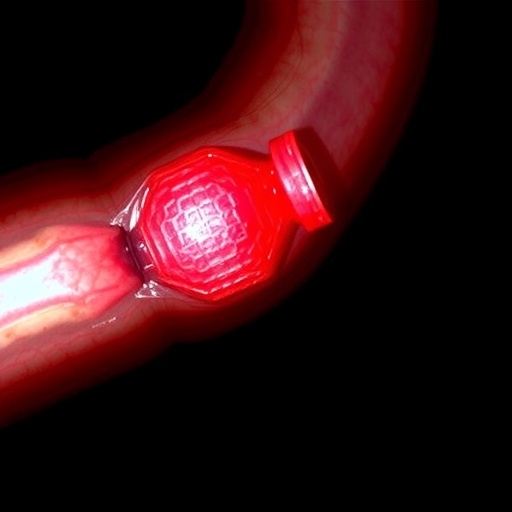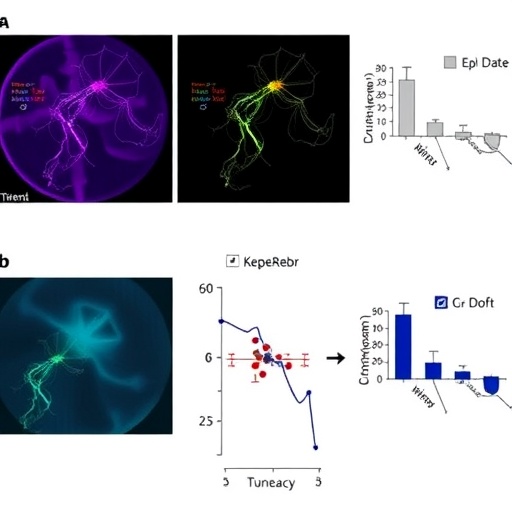A groundbreaking study published in the International Journal of Legal Medicine delves deeply into the intricate wound ballistics of gunshot injuries, offering unprecedented insights through innovative experimental approaches using simulants and composite models. This research, conducted by Große Perdekamp and Pollak, harnesses the power of forensic science combined with advanced materials to shed light on the complex mechanisms underlying gunshot trauma, advancing both clinical and legal understanding in forensic pathology.
Understanding the exact nature of gunshot wounds has remained one of the most challenging tasks for forensic experts, particularly when translating findings from experimental set-ups to real human tissues. The newly introduced experimental framework in this study bridges that critical gap by utilizing composite ballistic simulants that closely mimic human tissue responses. These models allow for controlled, repeatable test shots that reveal the subtle interactions between projectile characteristics and tissue deformation.
At the heart of this research is the meticulous examination of autopsy reports from victims of gunshot injuries. Large datasets paired with experimental test shots offer a dual perspective. The research team compares the wound tracks and energy transfer patterns discovered in actual fatal cases with the physical evidence generated in controlled environments. This comparison is essential, as it validates the ballistic properties of the simulants and refines the understanding of how real human tissue might react under similar trauma.
.adsslot_RzQpUda5hW{ width:728px !important; height:90px !important; }
@media (max-width:1199px) { .adsslot_RzQpUda5hW{ width:468px !important; height:60px !important; } }
@media (max-width:767px) { .adsslot_RzQpUda5hW{ width:320px !important; height:50px !important; } }
ADVERTISEMENT
Their approach is not just about replicating the visual characteristics of gunshot wounds, but also about capturing dynamic biomechanical aspects such as cavitation and the temporary stretch cavity formation. These phenomena are critical because they help determine the extent of permanent tissue damage, which can significantly influence the survivability of an injury and the trajectory of forensic investigations. The study’s data reveal nuanced differences in wound morphology depending on the caliber and velocity of the projectile, as well as the anatomical location of the impact.
High-speed imaging, along with advanced material sensors embedded in the simulants, enables the researchers to chronicle the instantaneous physical changes occurring during bullet penetration. The results illustrate how the kinetic energy is dissipated throughout the simulated tissue, offering a vivid map of destructive zones and compromised structures. This knowledge is crucial for forensic experts who must reconstruct shooting incidents with precision, distinguishing between entrance and exit wounds and predicting bullet paths.
The composite models, which combine layers of synthetic gelatin, muscle analogs, and bone surrogates, represent a significant leap forward from simpler ballistic gels traditionally used. These multi-layered setups better approximate the heterogeneous nature of human tissues, thus yielding more realistic wound ballistics. The improved fidelity brings forensic reconstructions closer to in vivo conditions, enhancing the accuracy of interpretations that can influence judicial outcomes.
Another vital aspect explored in this study is the effect of bullet design, including shape, mass, and velocity, on the nature of the wounds produced. Expanding beyond mere caliber considerations, the research demonstrates that hollow-point rounds, full metal jacket bullets, and other variants create distinct wound profiles. These differences can be observed both macroscopically during autopsies and microscopically in tissue damage, which can provide forensic professionals with a more refined toolkit for casework.
The authors also pay special attention to the interaction between projectiles and bone structures within the models, a component often underestimated in wound ballistic studies. The presence of bone dramatically alters the transmission of energy and tissue response, sometimes resulting in ricochets or fragmentation of the bullet. These phenomena complicate both medical treatment and forensic analysis. The data-driven insights presented here offer a clearer understanding of the bone’s mitigating or amplifying role in gunshot trauma.
In exploring the temporal evolution of wounds, the research addresses not only immediate mechanical damage but also secondary effects such as cavitation-induced vascular rupture and the formation of pressure waves propagating through tissues. These dynamic factors influence the long-term pathophysiology of gunshot injuries and help forensic pathologists infer the range at which shots were fired—a crucial element in legal investigations.
The implications of this study extend beyond forensic pathology into clinical trauma management. Emergency physicians and surgeons benefit from a clearer anticipation of the extent and nature of tissue injuries based on bullet type and impact characteristics. Having a predictive framework enhances treatment strategies and could improve patient outcomes by tailoring interventions more precisely to the actual injury patterns.
Moreover, the research provides a solid foundation for forensic experts working on cases involving varying environmental and ballistic contexts. It paves the way for standardized methods in reconstructing shooting scenes, ensuring that findings are reproducible and scientifically grounded rather than subjective. This standardization has significant legal ramifications, especially in trials where ballistic evidence is pivotal for determining intent, culpability, or self-defense.
One of the study’s remarkable contributions is how it challenges preconceived notions about wound formations based solely on projectile caliber. It reveals that tissue responses involve complex biomechanical interactions that can produce unexpected wound paths and severities. This dispels simplistic assumptions and encourages a more nuanced investigation framework, fostering scientific rigor in forensic pathology.
Furthermore, the integration of experimental findings with autopsy data forms a robust evidentiary basis to train forensic professionals. It allows the development of educational materials grounded in empirical research rather than anecdotal experience. This synergy between research and application promotes better knowledge transfer and proficiency in wound ballistic evaluation worldwide.
The detailed visualization embedded in the publication showcases the physical manifestations of different ballistic impacts on the simulants’ surface and internal structures, offering an invaluable reference for forensic practitioners. Such imagery not only supports the narrative but also serves as a tool for judicial experts to communicate complex ballistic phenomena in courtrooms transparently and authoritatively.
Looking ahead, Große Perdekamp and Pollak envision extending their research to include other projectile types and calibers, as well as exploring environmental factors such as intermediate targets and clothing. This holistic approach promises to deepen the understanding of gunshot injury mechanics further and broaden its forensic applicability.
In conclusion, this pioneering research bridges critical gaps between experimental wound ballistics and forensic autopsy findings. It strengthens the scientific framework enabling forensic pathologists to interpret gunshot injuries with greater accuracy and reliability. By refining ballistic simulants and anchoring their results in authentic case data, the study marks a significant milestone, promising advancements in forensic science, clinical practice, and legal outcomes surrounding gunshot injuries.
Subject of Research: Autopsy findings and wound ballistic considerations in victims of gunshot injuries based on test shots to simulants and composite models.
Article Title: Autopsy findings in victims of gunshot injuries: wound ballistic considerations based on test shots to simulants and composite models.
Article References:
Große Perdekamp, M., Pollak, S. Autopsy findings in victims of gunshot injuries: wound ballistic considerations based on test shots to simulants and composite models. Int J Legal Med (2025). https://doi.org/10.1007/s00414-025-03543-w
Image Credits: AI Generated
Tags: autopsy insights on gunshot traumaclinical implications of gunshot woundscomposite ballistic simulants for injury modelingcontrolled testing of gunshot woundsexperimental approaches in forensic pathologyforensic medicine advancementsforensic science gunshot wound analysisinnovative methods in autopsy studieslegal understanding of firearms injuriesprojectile characteristics and tissue interactionstranslation from experiment to human tissuewound ballistics research techniques





